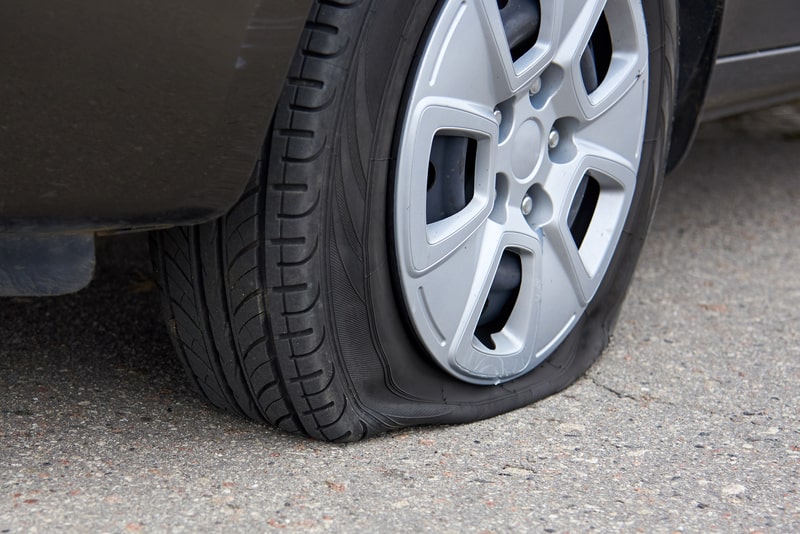It can be annoying and unpleasant to have a flat tyre. Unexpectedly and frequently at the worst possible time, it can occur. But what factors contribute to tyre failure, and what dangers come with it? The Causes and Risks of Tire Failure and measures you may take to avoid tyre failure are all covered in this article.
Causes of Failure:
Tyre failure has several reasons, and being aware of them might assist you take precautions. Let us have a look over the most common causes:
- Punctures –
One of the most prevalent reasons for tyre failure is punctures and cuts. Sharp things like screws, nails, and glass can cause them. If the puncture is not too big, it may typically be fixed. The tyre will need to be changed, though, if it is too big.
- Underinflation –
Another frequent reason among Causes and Risks of Tire Failure is underinflation. A tire’s sidewalls may bend more than they should if it is underinflated. This may result in heat build-up and ultimately tyre failure. Additionally, it may result in uneven tyre wear, which might reduce tyre life.
- Overloading –
A vehicle is said to be overloaded when it is carrying more weight than it was intended to. This can put the tyres under too much strain, which might result in tyre failure. Make certain you are not going over your vehicle’s weight capacity by checking the capacity.
- Age –
Like everything else, tyres also become older. Tyre failure can result from the rubber becoming brittle and cracking over time. No matter how much tread is still on the tyre, it is advised to change them every six years.
Risks Of Tire Failure:
Failure of a tyre may be risky and have negative effects. The following are some dangers connected to tyre failure:
- Blowouts –
A blowout happens when a tyre suddenly loses air pressure. This might lead to the driver losing command of the vehicle, which could cause a devastating crash.
- Hydroplaning –
When a vehicle’s tyres lose grip in slick circumstances, hydroplaning happens. The car could slip or roll out of control as a result of this. Worn tyres are more prone to hydroplane. It may lead to a severe accident making it in the list of Causes and Risks of Tire Failure.
- Reduction Of Handling And Braking –
When a tyre fails, it may affect how the car handles and brakes. This might make it difficult for the driver to keep the automobile under control, which could lead to an accident.
How To Avoid Tyre Failure?
Thankfully, there are several measures you may take to avoid tyre failure. Here are a few pieces of advice:
- Check Tyre Pressure Regularly –
One of the most crucial things you can do to avoid tyre failure is to frequently check your tyre pressure. Make sure your tyres are correctly inflated since underinflated tyres are more prone to fail.
- Check For Tyre Damage –
Check your tyres frequently for any indications of wear, such as bulges, cuts, or punctures. Have your tyres checked by an expert if you detect any damage.
- Rotate Your Tires –
Your tyres’ uniform wear may be ensured by rotating them. This can lengthen their useful lives and lower the possibility of tyre failure.
- When Necessary, Replace Your Tyres –
As was previously stated, tyres need to be renewed every six years. No matter how much tread they still have, that is true. You should replace your tyres as soon as possible if they are showing indications of wear or damage. You should do this to avoid the Causes and Risks of Tire Failure.
Benefits Of Having A Car Air Pump:
It may be irritating and worrisome to have a flat tyre. Having a portable Car air pump, though, might be helpful. In the event of a flat tyre, the following are some advantages of carrying a portable air pump:
- A flat tyre may be quickly and easily fixed by using an automobile air pump. Simply inflate the tyre to resume driving rather than waiting for a tow vehicle or attempting to change the tyre yourself.
- You may save time and money by using an automobile air pump to inflate a tyre. You won’t need to pay a professional to change the tyre or wait for a tow vehicle. Instead, you can self-inflate the tyre and resume driving.
- You can carry portable air pumps everywhere you go since they are small and practical. You may always keep one on hand in case of need because it can fit in the trunk of your car.
- A portable air pump can be used to pump air into a flat tyre to stop additional harm to the tyre. Driving on a flat tyre may result in uneven tyre wear and possible rim damage. You can stop additional harm to the tyre and extend its life by inflating it.
Failure of a tyre may be dangerous and annoying. However, being aware of the Causes and Risks of Tire Failure might help you take precautions against it. By routinely monitoring your tyre pressure and examining your tyres.
Carorbis.com hosts a lot of useful products to help you have a better car-owning experience. Check out our products for buying car accessories that fit your needs.
Also read this: What Foods To Eat And Avoid To Reduce viral infection




